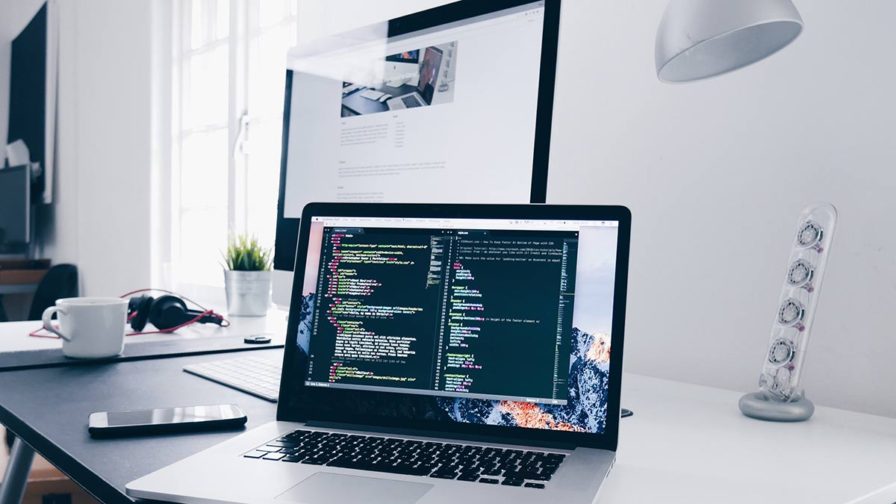Aligned Position Web Design: Building Responsive, Mobile-Friendly Websites for Modern Users
Aligned Position Web Design: Building Responsive, Mobile-Friendly Websites for Modern Users
Blog Article
The Most Effective Sorts Of Web Style to Improve User Experience and Interaction
In the ever-evolving landscape of electronic communication, the performance of Web design significantly influences customer experience and engagement. Different style approaches, such as minimal, receptive, and interactive designs, each deal unique advantages that can deal with varied customer needs. Understanding which kinds of website design finest offer these goals can be crucial for services aiming to improve customer contentment and retention. Nevertheless, the inquiry remains: which layout components absolutely reverberate with customers and foster purposeful involvement? The exploration of these principles exposes critical understandings that may redefine your method to Web layout.
Minimalist Web Layout
As digital landscapes become significantly messy, minimalist Web style has become an effective technique to enhancing individual experience. This layout philosophy focuses on simpleness, concentrating on crucial elements while removing unneeded distractions. By making use of adequate white area, straightforward navigating, and a restricted shade palette, minimal layout cultivates clearness and routes individual attention to key content.
The core principle of minimalist Web design is to create a seamless interaction for users. By decreasing cognitive tons, customers can promptly realize information without really feeling overwhelmed. This direct technique not only improves functionality yet likewise urges interaction, as site visitors are most likely to discover a site that is simple and visually appealing to browse.
In addition, minimal layout often stresses typography and images, utilizing these aspects tactically to convey messages successfully. In significance, minimal Web style is not just a trend; it is a thoughtful method that recognizes the importance of user-centered layout.
Responsive Web Design
In today's varied electronic atmosphere, responsive website design has actually ended up being essential for producing a smooth customer experience across a plethora of tools. As individuals gain access to web sites on smart devices, tablets, laptops, and desktops, the capability of a site to adjust its format and content to different screen dimensions and resolutions is critical.
Receptive Web design employs flexible grids, pictures, and CSS media inquiries to make certain that Web content is provided optimally, no matter of the tool made use of. This technique not only boosts the aesthetic charm of a web site but likewise substantially enhances usability. Individuals are most likely to involve with a site that offers a constant experience, as it eliminates the disappointment of having to zoom in or scroll exceedingly.
By adopting receptive design, services can enhance their visibility and reach a more comprehensive audience. In recap, responsive Web layout is a basic method that improves customer experience, engagement, and general fulfillment.
Interactive Web Layout
Responsive website design lays the groundwork for boosting user experience, however interactive Web layout takes this an action additionally by involving customers in a much more dynamic way - Aligned Position Web Design. By including elements such as computer animations, clickable prototypes, and real-time comments, interactive website design mesmerizes users, attracting them right into a richer surfing experience
This approach not just fosters engagement yet also urges users to discover material proactively instead of passively consuming it. Techniques such as gamification, where customers make benefits for completing jobs, can considerably enhance the moment invested on a site and boost general fulfillment. Interactive attributes can streamline complex details, making it more absorbable and delightful.

Integrating interactive layout components can likewise lead to higher conversion prices, as individuals are much more likely to involve with a site that actively includes them. Aligned Position Web Design. Ultimately, interactive website design changes user experiences right into unforgettable trips, guaranteeing that site visitors return time and once again
Apartment Design
Defined by its minimalistic approach, level design highlights simpleness and capability, removing unneeded aspects and concentrating on crucial functions. This design approach focuses on usability, ensuring that users can navigate interfaces effortlessly and effectiveness. By utilizing a tidy visual, flat design removes the mess frequently found in extra luxuriant styles, thus improving customer focus on content and performance.
The characteristic of level design exists in its usage of bold shades, basic typography, and geometric shapes. These components important source add to an aesthetically appealing user interface that is both modern and approachable. Additionally, level design cultivates a feeling of clarity, allowing individuals to discern necessary actions and information without interruption.
Furthermore, level layout is especially effective in responsive Web style, as its simplicity translates well across numerous tools and screen dimensions. By focusing on necessary attributes, flat style not just satisfies customer demands but also urges seamless interaction, making it a vital component of efficient Web design techniques.
Flexible Website Design
Flexible Web layout tailors the individual experience by creating numerous fixed formats tailored to different display sizes and tools. Unlike receptive design, which fluidly readjusts a single design, flexible style employs unique formats for specific breakpoints, making certain optimum presentation on different systems. This technique permits developers to concentrate on the one-of-a-kind attributes of each device, boosting usability by providing exactly what users need based on their context.
Among the primary benefits of flexible website design is its ability to enhance tons times and efficiency. By serving customized web content and pictures that fit the individual's device, internet sites can decrease data usage and improve loading speeds. This is particularly advantageous for individuals with slower connections or restricted information strategies.

Additionally, flexible layout helps with a much more regulated and consistent branding experience. Given that developers develop numerous designs, they can make certain that the visual components straighten with the brand's identity across different systems - Aligned Position Web Design. This leads to a cohesive customer experience, enhancing involvement and advertising individual retention
Verdict
Minimal layout cultivates clarity and focus, while receptive style guarantees adaptability throughout different devices, advertising ease of access. Jointly, these design comes close to contribute to the creation of easy to use atmospheres that not only boost contentment but likewise drive Recommended Site greater conversion prices, underscoring their vital significance in modern Web style methods.
.png)
Minimalist style cultivates quality and focus, while responsive style guarantees versatility across various devices, promoting accessibility. Collectively, these design comes close to contribute to the production of straightforward environments that not just enhance satisfaction yet likewise drive higher conversion click here now prices, emphasizing their critical importance in contemporary Web layout methods.
Report this page